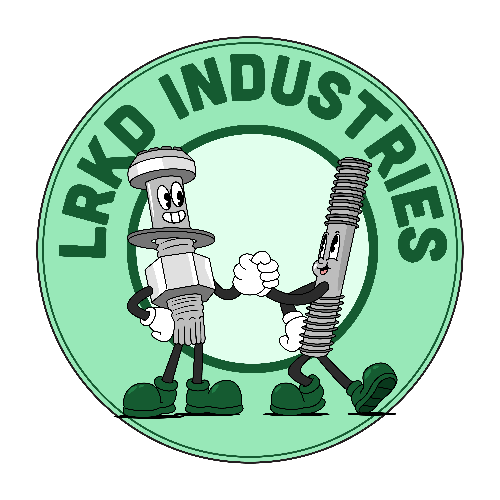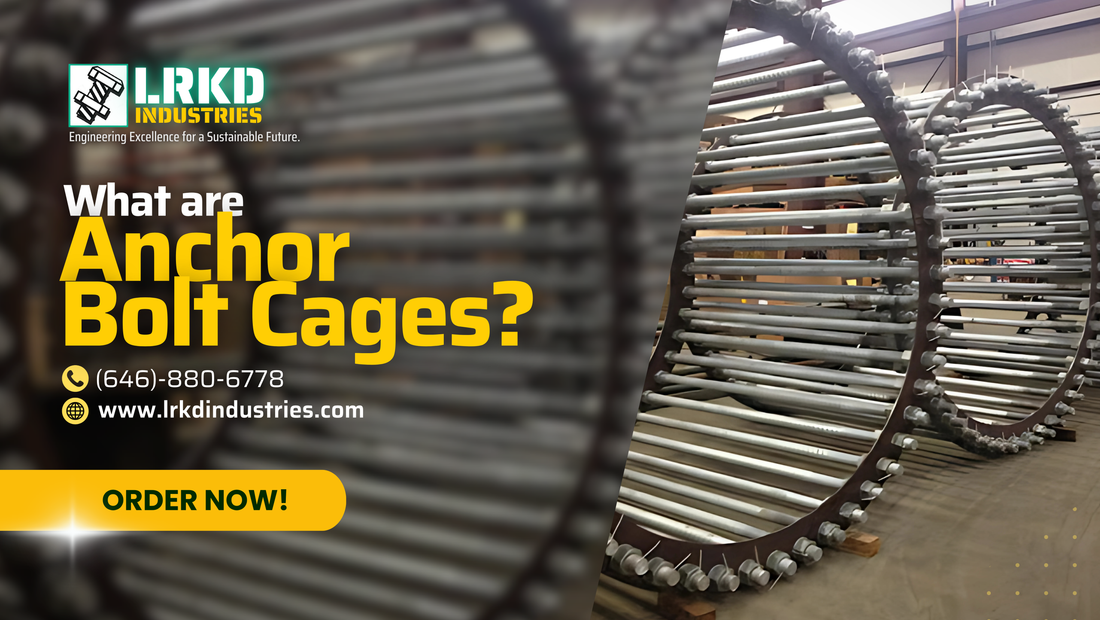Anchor bolt cage fabrication is a cornerstone of modern construction, ensuring the stability and longevity of critical infrastructure. This specialized process combines engineering expertise with advanced fabrication techniques to produce durable, reliable solutions for anchoring structural components. But what exactly does this process entail, and why is it so essential? Let’s delve into the world of anchor bolt cage fabrication to uncover its significance and practical applications.
What Is Anchor Bolt Cage Fabrication?
Anchor bolt cage fabrication involves the design, assembly, and production of a framework that secures anchor bolts in place. These bolts are integral to transferring structural loads from a building or structure to its foundation. Typically used in large-scale projects such as bridges, wind turbines, and industrial facilities, anchor bolt cages ensure alignment, stability, and load distribution.
Key components of anchor bolt cages include:
Anchor Bolts: Threaded rods that connect structural components to concrete foundations.
Rebar Framework: Steel reinforcement bars that provide additional support and stability.
Base Plates: Steel plates that secure the anchor bolts to the structure.
Fabricators like LRKD Industries, renowned for their precision and quality, play a vital role in delivering customized solutions that meet the exacting standards of modern engineering.
Why Is Anchor Bolt Cage Fabrication Crucial?
Anchor bolt cage fabrication is more than just a technical process—it’s a guarantee of structural integrity. Here’s why it matters:
Structural Stability: Properly fabricated cages ensure that anchor bolts remain aligned and secure, even under heavy loads or environmental stress.
Load Distribution: The rebar framework evenly distributes loads, minimizing stress on individual bolts and reducing the risk of failure.
Customization: Fabrication allows for bespoke designs tailored to specific project requirements, including varying bolt diameters, lengths, and finishes.
Imagine constructing a wind turbine without the confidence that its foundation is secure. The precision of anchor bolt cage fabrication ensures that towering structures can withstand wind forces, seismic activity, and other challenges.
The Fabrication Process: A Blend of Skill and Technology
The anchor bolt cage fabrication process involves several key steps:
Design and Engineering: Using CAD software, engineers design cages to exact specifications, factoring in load requirements and environmental conditions.
Material Selection: High-grade steel is chosen for its strength and durability. Options include:
Diameters: 1 3/4″ and 2 1/4″.
Lengths: Up to 60 feet.
Finishes: Plain (black) or hot-dip galvanized for corrosion resistance.
Cutting and Threading: Precision equipment cuts and threads anchor bolts to ensure perfect fit and functionality.
Welding and Assembly: Skilled welders assemble the rebar framework and attach the anchor bolts, adhering to rigorous quality standards.
Inspection and Certification: Finished products undergo thorough inspections and come with mill certifications, verifying that they are “melted and manufactured in the U.S.A.”
|
Jumbo Rebar #14 J and #18 J Dimensions |
|||
|
Bar Size |
Lbs/ft |
Diameter (excluding deformations) |
Diameter (including deformations) |
|
#14 J |
9.48 |
1.717" (+/- 0.02) |
1.887" (+/-0.065) |
|
#18 J |
14.6 |
2.214" (+/- 0.02) |
2.418" (+/-0.065) |
A Wind Farm in Texas
A leading example of anchor bolt cage fabrication in action is a wind farm project in Texas. With towering turbines designed to harness the state’s abundant wind energy, the project required robust foundations to anchor these massive structures.
This project underscores the importance of precision and quality in anchor bolt cage fabrication, ensuring not just functionality but also sustainability.
Tips for Choosing the Right Fabricator
Selecting the right fabricator is crucial for the success of your project. Consider the following factors:
Experience: Look for companies with a proven track record, like LRKD Industries.
Customization: Ensure they offer tailored solutions to meet your specific needs.
Certifications: Verify that products come with mill certifications for quality assurance.
Materials: Opt for fabricators using high-grade materials with options for corrosion resistance.
Support: Choose a partner who provides expert guidance and clear communication throughout the process.
Building the Foundations of Tomorrow
Anchor bolt cage fabrication is the silent backbone of modern construction, ensuring that our infrastructure is safe, stable, and resilient. From wind farms to skyscrapers, these meticulously crafted components enable ambitious engineering feats that shape our world.
As you embark on your next construction project, remember the critical role of anchor bolt cage fabrication. Partner with industry leaders like LRKD Industries to ensure that your foundations are as strong as your vision. After all, isn’t it worth investing in the very components that hold your dreams in place?
Anchor Bolt Cage Fabrication Solutions
Save your detailers some time! Whether you're in the early stages of construction or gearing up for installation, LRKD Industries provides expertly fabricated anchor bolt cages tailored to your exact specifications. Our team ensures each cage meets the highest standards for strength, alignment, and precision—so you can focus on execution, not corrections.
Contact LRKD Industries now for this time-saving fabrication service!
👉 Submit your plans today for a FREE consultation and anchor bolt cage evaluation.
📍 Address: 98 N Industry CT, Deer Park, NY 11729, US
📞 Phone: +1 646-880-6778
📧 Email: info@lrkdindustries.com
We are also able to convert the files into “.dwg” format compatible with Tekla, ensuring smooth integration with your modeling and fabrication workflows.
When every bolt counts, precision isn’t just a preference—it’s a requirement.
Want to dive deeper into the topic?
Click here to explore more about anchor rods.


